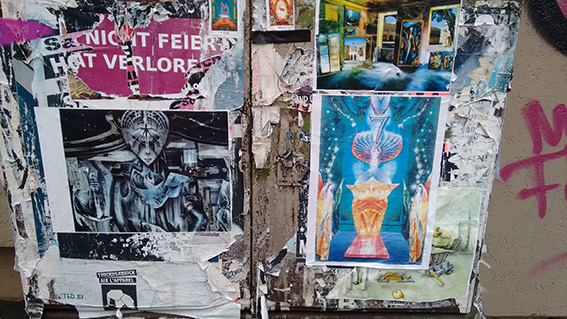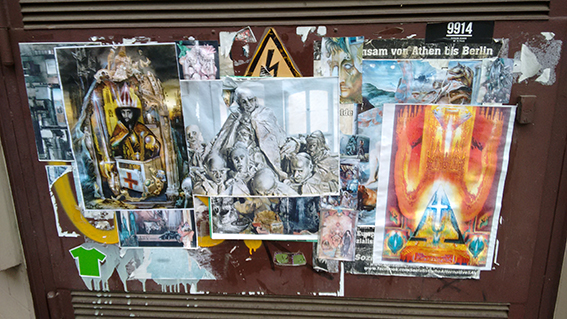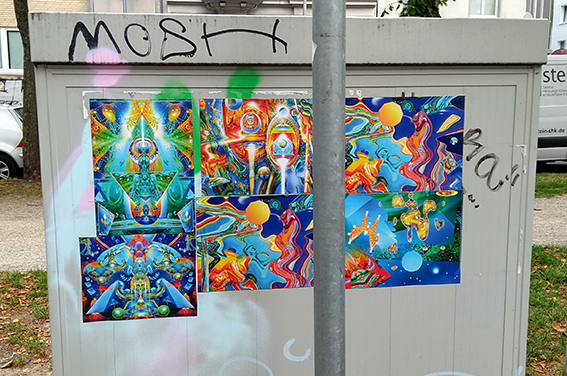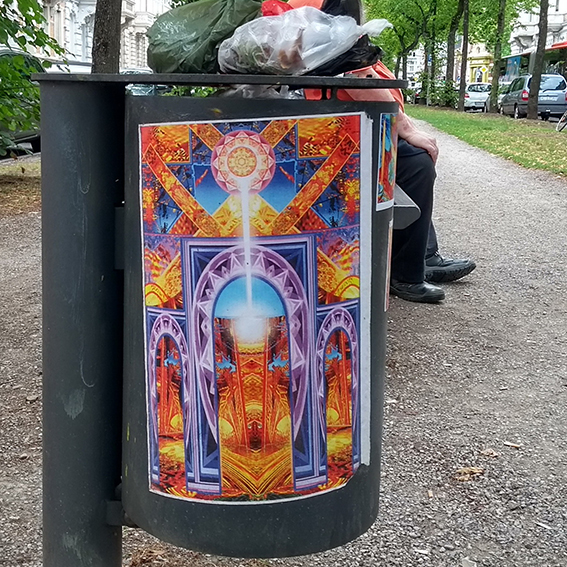Street Art by Norbert Lösche
















Street Art is current contemporary art. Universal, democratic, cross-border and cross-cultural. Universal because it appears everywhere on the planet and is equally recognizable in style and pathos. There is no special German, American or Japanese graffiti. Street Art is a unique phenomenon. A result of globalization. Street Art, whether it is sprayed graffiti created with a brush or glued on, is very democratic because it is accessible to everyone. Anytime. It is independent of age, gender, race, religion and education.
Up until the 20th century, it was taken for granted that art was brought into the designated rooms. To be viewed by certain social groups (educated middle class).
Street Art broke with this tradition, choosing public space, that is, publicly accessible areas, as painting grounds. Walls, house fronts, lamp posts, telephone boxes, underpasses, railroad cars and much more replaced the canvases of the past.
Since the selected areas have owners who often do not agree that their house fronts are provided with art, the creative people are criminalized.
Street Art is therefore in many cases illegal and punishable, which of course gives the whole thing a certain charm, which can, however, cost many artists dearly and it is not uncommon for street artists to go to jail for damage to property or environmental pollution.
The question of who actually owns the city or the cityscape is in the room and remains unanswered for the time being.
All the reprisals did not stop the triumphant advance of Street Art. At the end of the short text, one thing to think about: There is no street art in dictatorships.
My personal work as a street artist
Among the street artists there are sprayers, some work with brushes and some glue.
I am one of those who stick. How and when I got around to sticking photocopies on electrical boxes, lanterns, masts or other suitable surfaces, I no longer know. Maybe I had too many printouts. Perhaps I was also attracted by the opportunity to show my art. It is an experiment and I made and continue to have new experiences. During my time as a freelance artist, I have had the opportunity to exhibit in museums, galleries, public institutions and restaurants. The conventional way with conventional experience. The free accessibility of Street Art resulted in new, surprising encounters. With young people, workers on scaffolding, older women who walked their dogs. People who may never go to a museum or gallery. People spoke to me, mostly when I was sticking, and showed interest in the content and techniques. Most of the time I was praised and thanked, which every artist likes to hear. I also had the opportunity to get to know a different point of view.
Officials from the public order office spoke to me when I was hanging up a picture with an owl. In their opinion, I had committed an administrative offense for either wild billposting or environmental pollution. Seeing my art like this was completely new and surprising. To describe my pictures as pollution and to impose a fine of 80 € - yes, is it still possible? It didn't help if I referred to Article 5 of the Constitution. I paid my fine and thought: Everyone does their job: the law enforcement officers theirs and I mine.
It goes without saying that you can't make any money with Street Art - but having to pay for it now?
Another experience came when I realized that pictures were being destroyed. Applied vandalism - not often, but on a regular basis, some art connoisseurs seem to express their opinions about my paintings in this drastic way. I now tolerate this reality. And consider it, for its part, as an art form (destructive art).
These artists of destruction want to express something. If they're getting creative, they should. I tell myself to myself: You can't tear off as much as I can glue. This also touches on a peculiarity of Street Art: its transience. If the vandals do not take action, rain and sunshine, wind and weather ensure that the pictures are rarely seen for more than a few months. Against all odds, I stay active. Like an artist on a secret mission with a license to glue.
Norbert Lösche (2021)